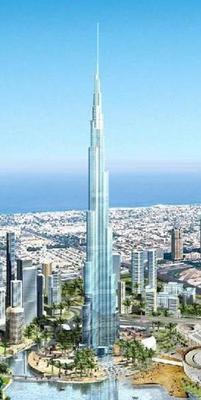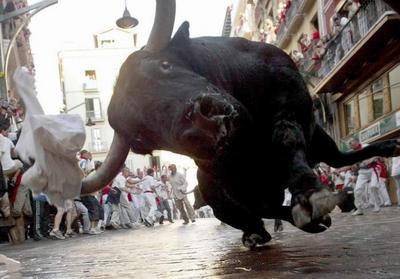The Future of the Middle East: The Burj
 See the picture at left: It's the Burj Dubai (much more below). This is what the Middle East is capable of.
See the picture at left: It's the Burj Dubai (much more below). This is what the Middle East is capable of.Last year I had the good fortune of being stationed in Bahrain for five months. One of my assignments - real tough duty - was to visit several of the business hubs in UAE (involving Navy communications). I flew a C-130 from Bahrain to Fujarah (not Fallujah), then drove (actually, my Avis driver drove me) across country to Jebel Ali, where the Navy pulls in. From there, we drove to Dubai. Dubai, the city of buildings from Space 2010! Unbelievable architecture, unbelievable commerce. Dubai reminded me of a combination of Chicago, Dallas and LA, though hot as hell when I was there (in August).
Driving around UAE I never felt threatened. Walking around Dubai, likewise.
I tell my Syrian friends back in the states that one day, our efforts here will hopefully help restore sanity to the Middle East, where walking around New Baghdad is the same as walking around Dubai.
It will happen one day. Once the Iraqi people reclaim their land.
The Burj Dubai (Arabic for "Tower of Dubai") is a skyscraper currently under construction in Dubai, United Arab Emirates. Its exact height remains a closely-guarded secret, but is believed to be approximately 705 meters (2,314 ft).
Expected to be completed in 2008, the Burj Dubai is a formidable threat to other bids to the title of world's tallest building. These include the 1,776-foot (547 meter) Freedom Tower in New York City, the Shanghai World Financial Center, and the current record holder, Taipei 101. The Burj Dubai's developer Emaar Properties has suggested that the Burj Dubai will become the tallest manmade structure of any kind in history. The highest structure was the 645.4 meter (2,120 feet) Warsaw radio mast built in 1974 which collapsed during renovation work in 1991.
The Burj Dubai has been designed to be the center of a large-scale, mixed-use development that will include commercial, residential, shopping, entertainment, and leisure outlets. The complete development, including the US $800 million tower, will cost about US $8 billion.
The Burj Dubai will be the latest feather in the cap of Dubai, which is also building the largest man-made marina (the Dubai Marina), the world's largest man-made island (Palm Islands), and already had the world's tallest 5-star deluxe hotel (the Burj al-Arab).
Developers say the silvery glass sheathed concrete building will restore to the Middle East the honor of hosting the earth's tallest structure -- a title lost circa 1300 when Lincoln Cathedral upset the 38-century reign of Egypt's Great Pyramid of Giza. However, it may not hold this title for long if the enormous 1,000 m (3,281 ft) Solar Tower project that has been proposed in Buronga, New South Wales, Australia is completed as planned.
A hotel will occupy the lower 37 floors. Floors 45 through 108 will have 700 private apartments (which, according to the developer, sold within eight hours of going on sale). Corporate offices and suites will fill most of the rest, except for a 123rd floor lobby and 124th floor observation deck, with an outdoor terrace for the brave. The spire will also hold communication equipment.
Architecture
The design of Burj Dubai is derived from the geometries of the desert flower, which is indigenous to the region, and the patterning systems embodied in Islamic architecture. It combines historical and cultural influences with cutting edge technology to achieve a high-performance building which will set the new standard for development in the Middle East and become the model for the future of the city.
The tower is composed of three elements arranged around a central core. As the tower rises from the flat desert base, setbacks occur at each element in an upward spiraling pattern, decreasing the mass of the tower as it reaches toward the sky. At the top, the central core emerges and is sculpted to form a finishing spire. A Y-shaped floor plan maximizes views of the Persian Gulf.

















<< Home